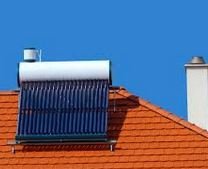It is finally dawning on me that your overriding concern is a desire to not build anymore electric plants driven by natural gas or coal....
Hadn't really thought of it that way, but I guess that's true. Though maybe not strictly - the more intermittent RE we add, the more we need NG peaker plants to handle the intermittents. I don't like coal, it is dirty to burn and dirty to mine. 'Clean coal', IIRC, takes ~ 20% more coal for the same output, so that's more mining. Might still make sense in the interim though, I dunno.
... Wouldn't it be nice if when that day comes we have already transitioned off of regular ICE driven cars including hybrids? What is the downside? Overall green house emissions will be lower during the transition period (despite building new natural gas plants) and we will get all of the other benefits of EVs like less noise pollution and lower maintenance costs. ...
Several downsides. First, it does not appear that green house emissions would be much lower (if at all) during the transition period - that's one of the points I'm making. The bars on that chart on post #377 are only marginally better for EVs on 100% NG versus the 2013~2014 hybrid. Hybrids are getting better faster than the NG part of the grid is getting efficient. I'm not sure, but I think the efficient co-gen turbines are more for base load, not so much for peaker (I'll try to look that up later). The Prius mpg improved ~ 26% in 10 years. And recall that EVs are currently so efficient, there just is not much room for improvement there. If you are 85% from battery to wheels, you can't get to 100%, there just isn't much there that hasn't already been rung out. In an odd way, the ICE being inefficient means it still has room to grow.
So if everyone gets on the EV bandwagon, and further developments in hybrids keep putting hybrids in the lead, we may have actually missed out on cleaner air. I just don't see it as any slam-dunk, where we decide to put all our eggs in the EV basket. Let the fans buy them (w/o subsidies), and we will see how it goes. May the best win (or co-exist?).
We are so far from the day of regular RE excesses for EVs, that we can wait and watch and re-evaluate. It won't happen so fast that we miss the on-ramp.
The other benefits, reduced maintenance, noise, fuel costs, can be determined by each individual. Those are personal choices, and pretty transparent. But not everyone is 'getting' the environmental side of it, and a twisted story is being pushed by people like Musk, and people listen to him.
... Back to the topic for this thread: Thoughts on Tesla deserve more than agnostic recognition if Tesla is the driving force behind making the transition happen. Before you can believe in Tesla you need to be onboard with the shift to full electric. ...
And of course, I'm not onboard with the shift to full electric, not yet anyway. It will be apparent in plenty of time (as I said above).
...
A final note, Tesla also is currently building
huge battery farms to hold the energy created by clean energy. This is a big step in making solar and wind power more viable. Here is info on one such project, but there are others:
https://www.theverge.com/2017/3/8/14854858/tesla-solar-hawaii-kauai-kiuc-powerpack-battery-generator. More support for Tesla is a good thing; not just for EV fanboys like me.
Here's a good example. The 'fans' see this and are excited, I see it and get a bit depressed.
That "huge" battery farm is 52 MW-hrs. A typical coal plant in IL (probably anywhere in the US), is ~ 800 MW, and we have about 20 of them in IL. So that "huge" battery farm could supply the power of that coal plant for 3.9
minutes. Well, actually it couldn't, that would be too high of a discharge rate, but that gives a sense of the scale. So if you want a battery farm like that to back up the output of a single coal plant that you replace with some intermittent RE, and want to cover a 24 hour period, you need...
about 370 of those battery farms. Now multiply by 20 for all of IL, and we are at 7,400 of them! Now what about a
week of overcast in winter, only getting maybe 10% expected power from RE? 7,400 x 7 x .9 ~ 46,500 of those battery farms. Now that would be HUGE! Just for IL. I'll let you figure a cost number on that, along with battery replacements in 10 years or so (daily cycling will take a toll)...
Sure, there are some mitigating factors in there, but it gives a sense of scale. I think it is far more likely that we will see more NG plants built as RE increases (and maybe coal taken down slower?) - I'm pretty sure they will be cheaper than batteries for a long long time.
Batteries will be increasingly used for load-leveling. First to cover seconds and minutes of small gaps as turbines ramp up. Then minutes and hours of gaps (not the entire production), so that a coal plant could ramp down earlier, or ramp up later. But batteries to actually supply days of backup for large amounts of intermittent RE just isn't adding up. Search on the "Duck Curve", the gap between solar dropping off in the afternoon, and the demand surge as people arrive home. It's hard to fill that gap.
-ERD50

